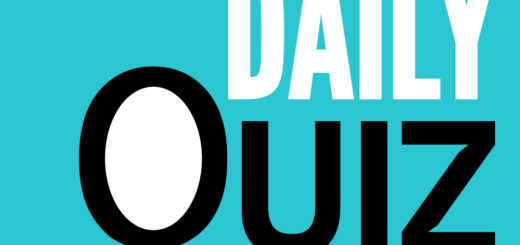Daily Current Affair Quiz: 18th June 2020
by
Mentors4ias
·
June 18, 2020
1. Which of the following statements are true?
1. India and Nepal share open border along West Bengal, Uttar Pradesh, Bihar and Sikkim.
2. It was after the Peace and Friendship Treaty of 1950 that the two countries encouraged a well-identified and formally accepted “open border” between them.
(a) 1 only
(b) 2 only
(c) Both 1 and 2
(d) Neither 1 nor 2
Ans: c
Justification:
-
India and Nepal share an approximately an 1,800- kilometre long open border running along West Bengal, Uttar Pradesh, Bihar and Sikkim.
-
It was after the Peace and Friendship Treaty of 1950 that the two countries encouraged a well-identified and formally accepted “open border” between them. An “open border” means that there is free and unrestricted movement of people from either side. Open border has led to better social and trade connectivity between the two countries leading to what is called ‘roti-beti ka rishta’.
2. Doha declaration on the TRIPS agreement and public health is associated with
(a) WHO
(b) World Bank
(c) World Economic Forum
(d) WTO
Ans: d
Justification:
-
It was adopted in 2001, by World Trade Organization (WTO) Members to clarify ambiguities between the need for governments to apply the principles of public health and terms of TRIPS.
-
This Declaration affirms that TRIPS Agreement does not and should not prevent Members from taking measures to protect public health
3. Which of the following country is not a participant of Open Skies Treaty
(a) Turkey
(b) UK
(c) India
(d) Both a and c
Ans: c
Justification:
-
U.S announced that it will exit the Open Skies Treaty , stating that Russia had “continuously and flagrantly” violated the treaty.
-
OST is an agreement that permits each state-party to conduct short-notice, unarmed, reconnaissance flights over the others territories to collect data on military forces and activities.
-
It is aimed at building confidence and familiarity among states-parties through their participation in the overflights.
-
Currently 34 states are party to the treaty while a 35th, Kyrgyzstan, has signed but not ratified it. Majority of members include North American and European nations like USA, UK, Russia, Turkey. o India, China are not members to the treaty.
4. Which of the following statement/s is/are true?
1. SARFAESI Act, 2002 was framed in order to address the problem of Non-Performing Assets (NPAs) or bad assets of banks/financial institutions through different mechanisms.
2. Provisions of this Act not applicable to any security interest created in agricultural land.
(a) 1 only
(b) 2 only
(c) Both 1 and 2
(d) Neither 1 nor 2
Ans: c
Justification:
-
SARFAESI Act, 2002 : The act was framed in order to address the problem of Non-Performing Assets (NPAs) or bad assets of banks/financial institutions through different mechanisms.
-
It allows only secured creditors (lenders whose loans are backed by a security such as mortgage) to take possession over a collateral security if the debtor defaults in repayment.
-
Provisions of this Act not applicable to: any security interest created in agricultural land, any case in which the amount due is less than twenty per cent of the principal amount and interest, any security interest for securing repayment of any financial asset less than one lakh rupees
5. Energy Transition Index 2020 is released by
(a) World Economic Forum
(b) International Energy Agency
(c) World Bank
(d) International Monetary Fund
Ans: a
Justification:
-
The World Economic Forum released the Energy Transition Index 2020.
-
The ETI is a fact-based ranking intended to enable policy-makers and businesses to plot the course for a successful energy transition.
-
It is a composite score of 40 indicators which benchmarks 115 countries on the speed and direction of their energy transition and identifying opportunities for improvement.


















